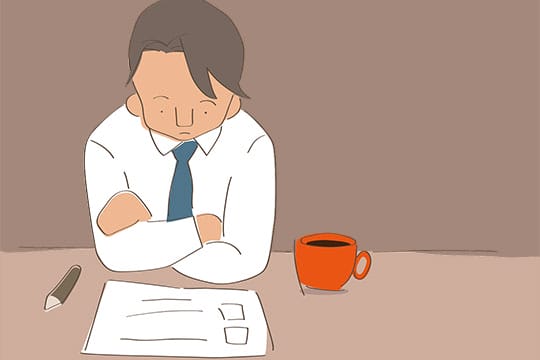The internet space is ruled by content, and hence the quote “Content is King”. It typically attracts a large number of people, which in turn establishes and popularises brands, increases visibility, engagement, and organic and social leads. That is the power of written words. No wonder then many unscrupulous entities rob high ranking and lucrative content for their own benefits. This form of thievery is also called “Plagiarism” where text-based information, graphics, infographics, and ideas are simply copied and passed off as one’s own.
Content-theft has turned into an epidemic. You need to make sure you protect your rights, rank, and revenues generated from these informative literary pieces. After all, an engaging content demands immense talent, passion, research, and labor.
So how do you know your precious article or product information has been robbed? Mentioned below are some of the ways you can find out.
Recommended for you: 5 Signs your Business is Crying Out for a Content Management System.
1. Search Engine Query:
 One of the most popular and easy ways of finding whether your content has been flicked is Google or any other search engine. Simply paste a couple of unique sentences from your post and let the results speak for themselves. Scrutinize the links. If there are several websites apart from yours in the subsequent list chances are your content has been compromised.
One of the most popular and easy ways of finding whether your content has been flicked is Google or any other search engine. Simply paste a couple of unique sentences from your post and let the results speak for themselves. Scrutinize the links. If there are several websites apart from yours in the subsequent list chances are your content has been compromised.
2. Copyscape, Eduzaurus & other similar tools:
 So what is Copyscape? In simple words, it is a web application which segregates duplicate content through its intelligent algorithm. Simply copy some of your content and paste it in Copyscape’s textbox. All parallel or plagiarised phrases and sentences will be highlighted in different colors. Copyscape allows you to identify online plagiarism for an array of content such as corporate website, ezine, blog, technical journals and marketing literary pieces. Copyscape is free to use but carries certain restrictions; in terms of the number of results or the list of websites, it returns for every query.
So what is Copyscape? In simple words, it is a web application which segregates duplicate content through its intelligent algorithm. Simply copy some of your content and paste it in Copyscape’s textbox. All parallel or plagiarised phrases and sentences will be highlighted in different colors. Copyscape allows you to identify online plagiarism for an array of content such as corporate website, ezine, blog, technical journals and marketing literary pieces. Copyscape is free to use but carries certain restrictions; in terms of the number of results or the list of websites, it returns for every query.
There are also Eduzaurus.com and such some other free online plagiarism checker tools available where you can search for duplicate content. These tools are also quite reliable and you can use them as per your needs. For instance, in the Eduzaurus website, you don’t even need to signup to use their tool. Just copy-paste your article or upload your document and get your report whenever you need it. You can even download the report in PDF format.

3. Simply file a DMCA complain:
 Simply file a DMCA complaint with Google. Although this is an extreme step and mostly initiated when the concerned plagiarist refuses to remove the stolen content, the complaint forces Google to de-list the hijacked content. This also makes sure you don’t lose out on ad revenue and page ranking fronts, in case your page lags behind vis-à-vis the duplicate one. Once the rogue page is de-listed, your content becomes original and chances are it may move up in SERP.
Simply file a DMCA complaint with Google. Although this is an extreme step and mostly initiated when the concerned plagiarist refuses to remove the stolen content, the complaint forces Google to de-list the hijacked content. This also makes sure you don’t lose out on ad revenue and page ranking fronts, in case your page lags behind vis-à-vis the duplicate one. Once the rogue page is de-listed, your content becomes original and chances are it may move up in SERP.
4. Set up Google alert:
 This tool is really handy and easy to use. So what is Google alert? It is an email sent to you for all the queries, typically new content which becomes available online for a particular search term, phrase etc. You can even choose a category for your search term and the frequency of the emails you want to receive. In short, you can monitor anything on the web.
This tool is really handy and easy to use. So what is Google alert? It is an email sent to you for all the queries, typically new content which becomes available online for a particular search term, phrase etc. You can even choose a category for your search term and the frequency of the emails you want to receive. In short, you can monitor anything on the web.
In case Google alerts you with a fresh post which resembles your own post you know your content has been plagiarised and therefore you can demand to get it removed immediately. A point to note here; make sure you request alert for special tags or phrases used in your articles. This way you won’t be overwhelmed or inundated with meaningless warnings.
5. Trackback or inbound links:
 According to Wikipedia “A trackback is one of four types of link back methods for website authors to request notification when somebody links to one of their documents”. This enables authors to keep track of who is linking to their articles. Make the best use of it. Some of the CMS software, such as WordPress has trackbacks built into them. You just need to check these links regularly and see if these inbound references mention just the URL or your entire content is posted. In the latter case, you need to take immediate action against the perpetrator.
According to Wikipedia “A trackback is one of four types of link back methods for website authors to request notification when somebody links to one of their documents”. This enables authors to keep track of who is linking to their articles. Make the best use of it. Some of the CMS software, such as WordPress has trackbacks built into them. You just need to check these links regularly and see if these inbound references mention just the URL or your entire content is posted. In the latter case, you need to take immediate action against the perpetrator.
How do you get the plagiarised content removed?

If your content has been hijacked, fret not. There are ways to get it removed and in some cases get the entire site carrying your content banned for life. Mentioned below are three effective ways.
- Contact the owner of the site which carries your content without permission or due credit. In the majority of the cases, a couple of emails are good enough to settle the issue.
- However, not everyone on the internet is a good soul. There are nasty characters out there who do not care for your requests, pleads or threats. In such cases, the only option left is to file a DMCA complaint.
- Yet another result oriented method of removing your plagiarised content is by contacting the hosting service provider of the tainted site. You can find out the provider’s name by visiting whoishostingthis.com. Simply type the URL of the rogue site. Once you know the name and the email address of this entity, write to them about your problem in strong words. Enclose a copy of the email sent to the site administrator as a proof. Be assured the service provider will immediately remove that page.
You may also like: 10 Essential SEO Friendly Features Need to Have in Your CMS.
How can you prevent plagiarism?

- Although this may seem childish and not a serious deterrent, placing a Copyright notice in the footer of your website makes a huge difference in many instances. It forces people to think twice before pressing the short cut keys to copy command. If possible create a separate page and mention relevant copyrights laws, its repercussions and ramifications. Mention the organizations and societies where your content is registered. This will surely dissuade many cyber content thieves.
- Place a Copyscape banner at the top and the bottom of the post. It is a very strong deterrent which can fetch severe penalties in terms of ban and de-listing.
- Google authorship is yet another way to protect your content from plagiarists. You just need to add “rel=author tag”, and Google will know that the content belongs to the author mentioned in the tag. Now, this may not deter a plagiarist but your post or page will not get penalized for duplicate content.
This article is written by Rahul Makhija. He is an online blogger and Social Media Expert at Onketing. He likes to blog on various SEO happenings & On-goings. In his free time he likes to study about web hosting.






